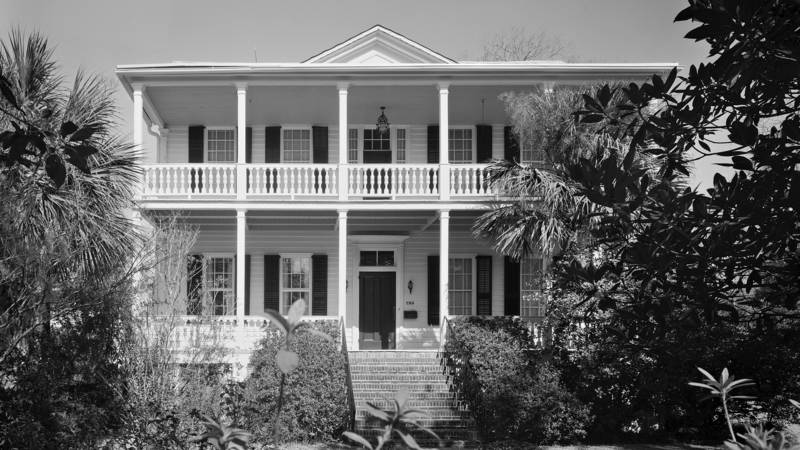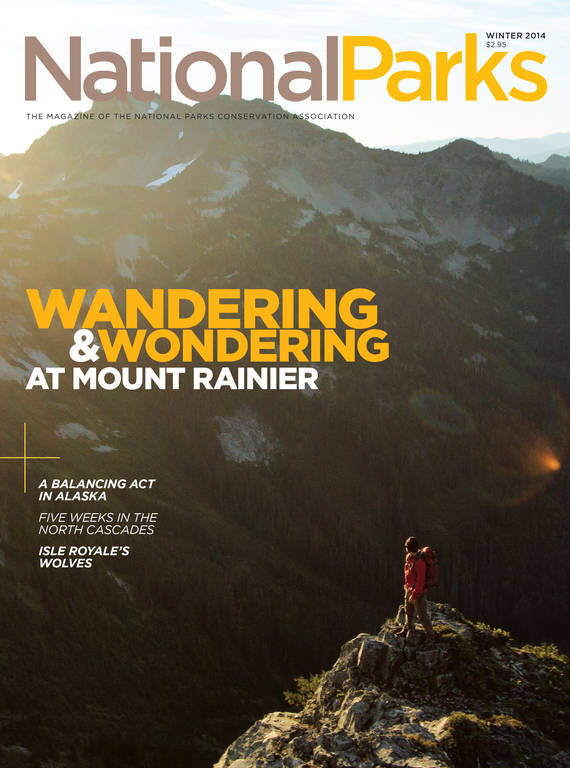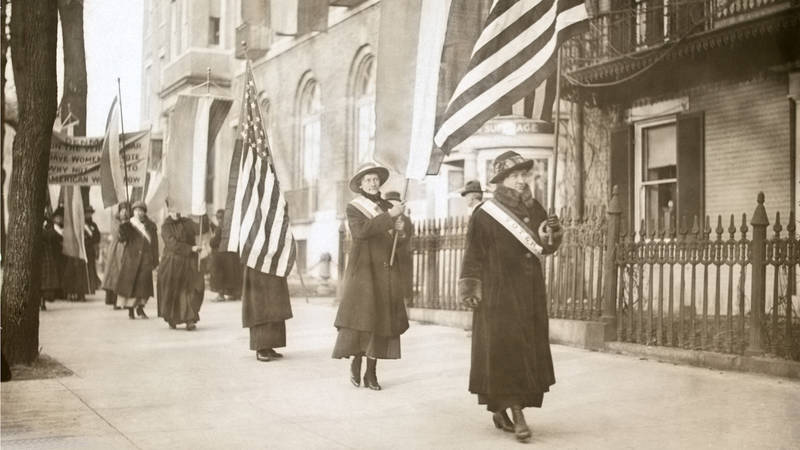Winter 2016
A Complicated Past
Is the U.S. Ready for a National Park Site Devoted to Reconstruction?
On the evening of May 12, 1862, the Confederate ship Planter sailed into Charleston’s harbor, and the captain and officers, breaching protocol, disembarked for a night of socializing. It was the rare moment Robert Smalls, a fiercely intelligent 22-year-old slave, had hoped for. In the dark hours before dawn, with the help of the African-American crew, he fired up the ships’ boilers, hoisted the state and Confederate flags, and donned the captain’s straw hat as a disguise. In a move punishable by certain death, the crew boldly sailed to a nearby wharf to pick up Smalls’ wife, children, and several others, made the key signals to exit the harbor safely, swapped the flags for a white sheet, and, as dawn broke, sailed straight into the nearby Union blockade. In a matter of hours, Smalls had succeeded in surrendering a huge trove of Confederate supplies to Northern forces and had delivered himself, his family, and others from slavery to freedom.
Lauded as a hero across the North, Smalls eventually became the captain of the Planter and one of the highest paid black soldiers in Union forces. Sitting next to Frederick Douglass, he successfully lobbied President Abraham Lincoln to enlist black soldiers, whose ranks swelled to 200,000, numbers that undoubtedly played a role in the outcome of the war. Later, with the reward money from his audacious feat aboard the Planter, Smalls bought his former master’s home in Beaufort, South Carolina. He went on to serve in the South Carolina state assembly and senate and as a congressman in the U.S. House of Representatives. And in 1868, at the state constitution convention, Smalls successfully advocated for universal education of all South Carolinians, regardless of race, a provision that citizens still benefit from today.
Smalls may not be a household name, but he was a key figure in one of the most formative and poorly understood eras in American history, the short period after the Civil War known as Reconstruction. During this approximately 12-year stretch, which began in 1865, a war-torn country wrestled with questions about reconciliation, the role of federal power, the benefits of citizenship, and establishing a new economic and social system with four million newly freed slaves.
Even though scores of National Park Service sites memorialize the Civil War, there isn’t a single one dedicated to Reconstruction. In part, this is because there has never been a big enough grassroots campaign to drum up the political support needed to establish such a site. (Park Service sites are designated by presidential proclamation or an act of Congress.) But the reasons also run deeper. Even now, some Americans view that time period as a dark moment when power dynamics shifted and white Southerners suffered. It’s a period that brings up hidden (and sometimes blatant) resentments, prejudices, and misconceptions that still simmer beneath the surface of our civic life today. And for many, it’s a sensitive topic that’s difficult to talk about.
The Park Service wants to change that. The agency is trying to bring the topic into the light and, it hopes, lay the groundwork to establish the first park site commemorating Reconstruction. The initial step is an ambitious year-long study of the period—expanded to include the years 1861 through 1898—that will wrap up this spring.
One of the study’s leaders, Michael Allen, a community partnership specialist for Fort Sumter National Monument and Charles Pinckney National Historic Site, is spearheading the creation of a database of Reconstruction sites, stories, and important figures by reaching out to local organizations and churches across the South, state historic preservation offices, and Park Service sites. Meanwhile, historians Kate Masur, a professor at Northwestern University in Evanston, Illinois, and Greg Downs, a professor at University of California, Davis, assembled a short book on Reconstruction (set to hit shelves in parks soon) and are visiting Reconstruction-related sites from Mississippi to South Carolina. The study’s leaders hope not only to unearth good candidates for new parks and national historic landmarks but to develop educational resources for existing parks and materials for schools.
“We have an opportunity that few other agencies have in that a lot of people trust what we say,” said Robert Sutton, chief historian for the Park Service. “We’re hoping that we will have an opportunity to educate the public about what Reconstruction was really about.”
For decades, some Americans on both sides of the Mason-Dixon Line regarded Reconstruction as a disaster, in which the South was hobbled by an overreaching federal government, preyed upon by Northern carpetbaggers and Southern scalawags, and damaged by former slaves, seen by many as ill-equipped to adapt to their newly found freedom and leadership roles. This view was promulgated by an influential school of historians; books such as Thomas Dixon, Jr.’s 1905 novel, The Clansman: An Historical Romance of the Ku Klux Klan; and the popular, influential, and overtly racist 1915 film, Birth of a Nation.
“You see emerging in the early 20th century a very broad-based cultural view that really sees Reconstruction as at best a foolish mistake—a vision that’s rooted in the idea that African Americans will always be inferior and separated—or at worst, a real violent and terrible overthrow of civilization,” said Downs. “This becomes an ideology of a national acceptance of segregation, one that has particularly powerful forms in the South but that also becomes a national order.”
In the mid-20th century, as the Civil Rights Movement gained momentum, a new generation of historians revisited Reconstruction, leafing through old church records, voting records, and town charters in dusty archives across the South. They came to see the dominant view of Reconstruction as wildly untrue and racist at the core. These historians argued that African Americans largely responded innovatively and responsibly to freedom, and that progressive policies established many of the institutions, such as universal education, that we still cherish as hallmarks of American democracy today.
“It was one of the few times in American history where the interpretation turned 180 degrees,” said Sutton. “The new interpretation is that it was a very positive thing and the disaster wasn’t Reconstruction. The disaster is that it ended.”
Freed people chartered successful new towns, many of which still exist, and experimented with different forms of self-governance. They founded churches and mended families that had been separated when members were sold off to distant owners. Newly installed, progressive Southern governments established hospitals, schools, and other community institutions that benefited not only blacks but all Southerners.
It was also a period of tremendous political change. In a matter of years, the country went from considering an amendment that would have guaranteed slavery to abolishing it altogether. In 1868, the 14th Amendment guaranteed due process and equal protection under the law to all citizens, regardless of race, and in 1870, the 15th Amendment prohibited racial discrimination in voting. African Americans exercised their right to vote, and many were elected to positions of authority, becoming local sheriffs, assessors, and U.S. members of Congress. In some states, more African Americans held office during Reconstruction than at any other time in U.S. history.
“It was an incredibly democratic moment in which many, many people in the United States were trying to remake the country on more democratic grounds than ever before,” said Masur. “Many of the ideas about democracy that we still hold dear today were forged during Reconstruction, far more than during the original founding of the United States.”
The changes brought by Reconstruction revolutionized political and economic systems. They also challenged white Southerners’ self-concepts, which, before the war, were largely in the context of a race-based hierarchy. The result was a backlash and, in the absence of slavery, an effort to recreate some kind of hierarchical system based on race, said Downs. Groups like the Ku Klux Klan began to terrorize African Americans with unfathomable violence, using fear and force to discourage them from exercising their rights. By 1896, the Supreme Court ruled in Plessy v. Ferguson that providing “separate but equal” facilities for the races was constitutional, ushering in the era of Jim Crow segregation.
For decades, scholars have widely accepted the revised view of Reconstruction as a time of opportunity, but the American public has remained relatively unaware of the era. Educators often gloss over the topic because of its complexity, and historians say it may be hard to talk about because it didn’t have a happy ending. Many older people learned only the old interpretation, and some people still cling to that version because it supports a worldview in which racism is justified. Mostly, however, people just don’t know about it.
“Go out on the street and ask people if they’ve heard of Reconstruction,” said Eric Foner, a Columbia University professor and author of Reconstruction: America’s Unfinished Revolution, 1863-1877. “First of all, they haven’t; ignorance is the number one thing. But when they have, they’ll tell you about corrupt carpetbaggers, about corrupt government, and about the North punishing the South—the underlying premise being that giving more rights to blacks is somehow a punishment to whites. The old mythology is still out there.”
That’s exactly the sort of educational gap the Park Service would like to address. The agency started tossing around the idea for a park dedicated to Reconstruction back in 2000, when then Secretary of the Interior Bruce Babbitt reached out to Foner for suggestions on locales. Babbitt even visited Foner’s top pick, Beaufort, South Carolina, a Confederate town that fell early to Union forces and still retains many significant post-war landmarks. Ultimately, the idea fizzled for a host of reasons, including a change in administration, the retirement of key political proponents of the idea, and powerful opposition from the Sons of Confederate Veterans. Foner was disappointed if unsurprised, but he remains cautiously hopeful, despite the fact that the Sons of Confederate Veterans suggested they would again oppose any effort by the Park Service to designate a new Reconstruction site in the region, a position echoed by others.
“It’s not going to turn out to be anything but another propaganda effort,” said Michael Hill, president of the League of the South, which advocates for state secession and anti-immigration measures. “If the federal government is involved in this and if they’re bringing in mainstream historians, this won’t be very favorable for the South. Reconstruction will be politicized: North, holy and righteous; South, evil and despicable.”
Yet the Park Service’s mandate is to celebrate the full history of our country, including time periods that have been overlooked, marginalized, or misunderstood, such as Reconstruction. The 150th anniversary of the beginning of Reconstruction and the approaching anniversaries of the 13th, 14th, and 15th Amendments inspired a revival of the idea to designate a new site. Recent events, such as the police violence and protests in Ferguson, Missouri, the Charleston church shooting, and the removal of the Confederate flag from the South Carolina statehouse, have also rekindled questions about the nature of our democracy. Do people of different races in fact have the same protection under the law? Are we all effectively equal? These are issues that defined Reconstruction—and make it especially relevant today.

Robert Smalls’ elegant white home still stands in downtown Beaufort, South Carolina.
LIBRARY OF CONGRESS
During that time, “we can see the United States wrestling with some of the central questions of citizenship, of belonging, of violence, and of the potential role of African Americans in American life,” said Downs. “We do seem to be in a moment now where many of those questions, which have always been there, have once again risen into public view.” The study also comes at a time when the Park Service is working to broaden its relevance among minorities by commemorating their contributions to the nation and shedding light on their struggles, among other measures.
“How do we engage new audiences? How do we bring in new history that we otherwise have not been addressing or dealing with? And how do we find ways to leave permanent marks as a part of the continuing journey of our American experience?” asked Michael Allen from Fort Sumter. “For me, that’s a driving force, because it encourages me to learn more, to dig deeper, and to really expand my horizon. Sometimes when you point these things out to individuals with other views, they will come back and say, ‘Well, you know, I just wasn’t taught that. I just didn’t know that.’”
Already, the Park Service study has gathered remarkable stories. In Tennessee, for example, Carroll Van West, the state historian and director of the Tennessee Civil War National Heritage Area, has visited churches and communities across the state that date to Reconstruction, interviewing elders, capturing their stories, and attending village homecoming celebrations. He has passed along numerous ideas for the study, including the story of one group that has worked to preserve Promise Land Community, a 1,000-acre settlement founded in 1870 by black Civil War veterans and former industrial slaves who worked the nearby Cumberland Furnace. In Promise Land, many residents owned the land they farmed, and the schoolhouse and church survive some 150 years later.
On the coast, a preservation group on Hilton Head Island has rallied to protect the remains of Mitchelville, South Carolina, the first self-governing community of freedmen in the nation, founded in 1862. The industrious citizens laid out tidy streets, established laws, elected leaders, and provided education for all children. Even Harriet Tubman reportedly traveled to see the successful freedmen’s town.

National Parks
You can read this and other stories about history, nature, culture, art, conservation, travel, science and more in National Parks magazine. Your tax-deductible membership donation of $25 or more entitles…
See more ›“It’s important for people to understand that this is not just an isolated story,” said Joyce Wright, executive director for the Mitchelville Preservation Project. “It’s an American story.” Wright would welcome a move by the Park Service to designate a new Reconstruction-related site, not only to celebrate stories like Mitchelville’s but to spur discussion about important issues. That’s the only way, she said, to promote healing. “Are we ready to talk?” she said. “I think, yes, we are. We can’t continue to repress and ignore. Talk about it. Talk about it so you can understand.”
Not far away, in Beaufort, South Carolina, where historians once considered a Park Service site more than 15 years ago, Robert Smalls’ elegant white home still stands downtown. Last May, Masur, Downs, and Allen ambled the streets of the town on a historic reconnaissance tour with prominent locals, visiting landmarks like the Smalls’ home and the Grand Army of the Republic Hall, an 1896 structure that served as a gathering place for veterans of the Union cause, mostly African Americans. Most locals support the idea of establishing a Park Service site, partly because they view it as a boon for tourism. The historians were welcomed, and local newspapers celebrated their arrival.
On their tour through the area, one building in particular stood out to Masur on that pleasantly warm afternoon. Over the years, the Arsenal, an imposing pale yellow fortress constructed in 1799 and rebuilt in 1852, housed weapons for the Carolina state militia, the Confederacy, the Union, the black militia during Reconstruction, and the late 19th-century Democrats, who violently reclaimed power from Republicans in the 1870s. Today, it serves as a museum.
“Just standing at that building and thinking about how many different things had happened right there was pretty remarkable,” said Masur. Many of the differing views and interests, sides and factions that have defined the major tides of our country’s history all walked under this same roof. How many unsung stories, Masur wondered, are hiding here in plain sight?
About the author
-
 Kate Siber
Kate SiberKate Siber, a freelance writer and correspondent for Outside magazine, is based in Durango, Colorado. Her writing has appeared in National Geographic Traveler and The New York Times. She is also the author of “National Parks of the U.S.A.,” a best-selling children’s book.


